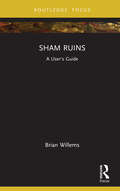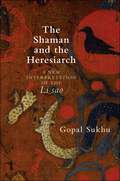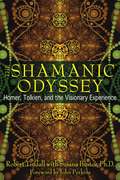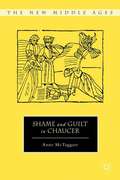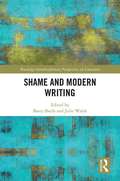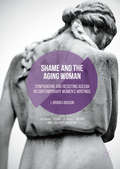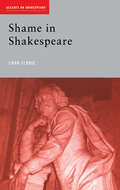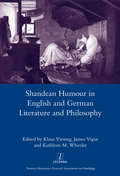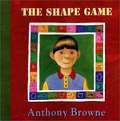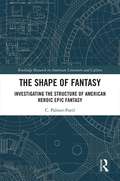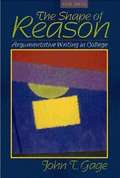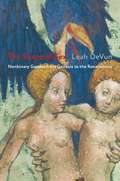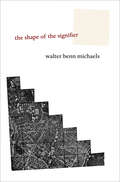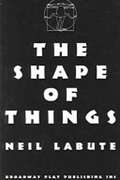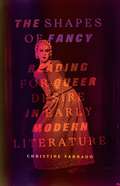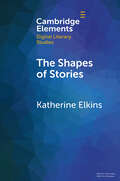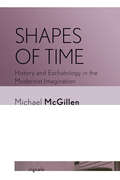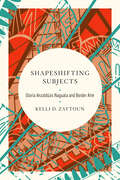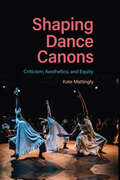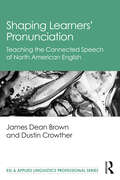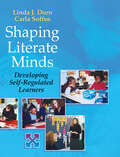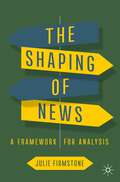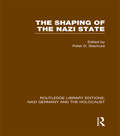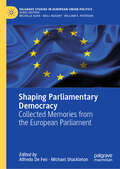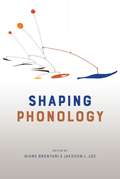- Table View
- List View
Sham Ruins: A User's Guide (Routledge Focus on Literature)
by Brian WillemsIn the middle of the eigtheenth century, a new fad found its way into the gardens of England's well-to-do: building fake Gothic ruins. Newly constructed castle towers and walls looked like they were already falling apart, even on the first day of their creation. Made of stone, plaster, or even canvas, these "sham ruins" are often considered an embarrassing blip in English architectural history. However, Sham Ruins: A User's Guide expands the specific example of the sham ruin into a general principle to examine the way purposely broken objects can be used to both uncover old truths and invent new ones. Along with architecture, work by Ivan Vladislavić, Tom Stoppard, Alain Mabanckou, Aleksei Fedorchenko, Michael Haneke, and Sturtevant is used to develop this thesis, as well as artifacts such as pre-torn jeans, fake histories, and broken screen apps. Using these examples, one of the key questions the book raises is: what is it that sham ruins ruin? In other words, if real ruins are ruins of what they actually are, then sham ruins should be considered ruins of what they are not. Thus sham ruins are about imposing new meaning where such meaning does not and should not exist. They also can show how things we think are functioning well are actually already broken. Sham ruins do this, and much more, by being lies, ruses, and embarrassments. This is what gives them the power with which we can think about objects in new, unintended ways.
The Shaman and the Heresiarch: A New Interpretation of the Li sao (SUNY series in Chinese Philosophy and Culture)
by Gopal SukhuThe Li sao (also known as Encountering Sorrow), attributed to the poet-statesman Qu Yuan (4th–3rd century BCE), is one of the cornerstones of the Chinese poetic tradition. It has long been studied as China's first extended allegory in poetic form, yet most scholars agree that there is very little in the two-thousand-year-old tradition of commentary on it that convincingly explains its supernatural flights, its complex floral imagery, or the gender ambiguity of its primary poetic persona. The Shaman and the Heresiarch is the first book-length study of the Li sao in English, offering new translations of both the Li sao and the Nine Songs. The book traces the shortcomings of the earliest extant commentary on those texts, that of Wang Yi, back to the quasi-divinatory methods of the highly politicized tradition of Chinese classical hermeneutics in general, and the political machinations of a Han dynasty empress dowager in particular. It also offers an entirely new interpretation of the Li sao, one based not on Qu Yuan hagiography but on what late Warring States period artifacts and texts, including recently unearthed texts, teach us about the cultural context that produced the poem. In that light we see in the Li sao not only a reflection of the era of the great classical Chinese philosophers, but also the breakdown of the political-religious order of the ancient state of Chu.
The Shamanic Odyssey: Homer, Tolkien, and the Visionary Experience
by Robert Tindall Susana BustosReveals the striking parallels between indigenous cultures of the Americas and the ancient Homeric world as well as Tolkien’s Middle Earth • Explores the shamanic use of healing songs, psychoactive plants, and vision quests at the heart of the Odyssey and the fantasy works of J. R. R. Tolkien • Examines Odysseus’s encounters with plant divinities, altered consciousness, animal shapeshifting, and sacred topography--all concepts vital to shamanism • Reveals how the Odyssey emerged precisely at the rupture between modern and primal consciousness Indigenous, shamanic ways of healing and prophecy are not foreign to the West. The native way of viewing the world--that is, understanding our cosmos as living, sentient, and interconnected--can be found hidden throughout Western literature, beginning with the very origin of the European literary tradition: Homer’s Odyssey. Weaving together the narrative traditions of the ancient Greeks and Celts, the mythopoetic work of J. R. R. Tolkien, and the voices of plant medicine healers in North and South America, the authors explore the use of healing songs, psychoactive plants, and vision quests at the heart of the Odyssey, The Lord of the Rings trilogy, and Tolkien’s final novella, Smith of Wootton Major. The authors examine Odysseus’s encounters with plant divinities, altered consciousness, animal shapeshifting, and sacred topography--all concepts vital to shamanism. They show the deep affinities between the healing powers of ancient bardic song and the icaros of the shamans of the Amazon rain forest, how Odysseus’s battle with Circe--wielder of narcotic plants and Mistress of Animals--follows the traditional method of negotiating with a plant ally, and how Odysseus’s journey to the land of the dead signifies the universal practice of the vision quest, a key part of shamanic initiation. Emerging precisely at the rupture between modern and primal consciousness, Homer’s work represents a window into the lost native mind of the Western world. In this way, the Odyssey as well as Tolkien’s work can be seen as an awakening and healing song to return us to our native minds and bring our disconnected souls back into harmony with the living cosmos.
Shame and Guilt in Chaucer
by Anne MctaggartExplores the representation of emotions as psychological concepts and cultural constructs in Geoffrey Chaucer's narrative poetry. McTaggart argues that Chaucer's main works including The Canterbury Tales are united thematically in their positive view of guilt and in their anxiety about the desire for sacrifice and vengeance that shame can provoke.
Shame and Modern Writing (Routledge Interdisciplinary Perspectives on Literature)
by Barry Sheils Julie WalshShame and Modern Writing seeks to uncover the presence of shame in and across a vast array of modern writing modalities. This interdisciplinary volume includes essays from distinguished and emergent scholars in the Humanities and Social Sciences, and shorter practice-based reflections from poets and clinical writers. It serves as a timely reflection of shame as presented in modern writing, giving added attention to engagements on race, gender, and the question of new media representation.
Shame and the Aging Woman
by J. Brooks BousonThis book brings together the research findings of contemporary feminist age studies scholars, shame theorists, and feminist gerontologists in order to unfurl the affective dynamics of gendered ageism. In her analysis of what she calls "embodied shame," J. Brooks Bouson describes older women's shame about the visible signs of aging and the health and appearance of their bodies as they undergo the normal processes of bodily aging. Examining both fictional and nonfiction works by contemporary North American and British women authors, this book offers a sustained analysis of the various ways that ageism devalues and damages the identities of otherwise psychologically healthy women in our graying culture. Shame theory, as Bouson shows, astutely explains why gendered ageism is so deeply entrenched in our culture and why even aging feminists may succumb to this distressing, but sometimes hidden, cultural affliction.
Shame in Shakespeare (Accents on Shakespeare)
by Ewan FernieOne of the most intense and painful of our human passions, shame is typically seen in contemporary culture as a disability or a disease to be cured. Shakespeare's ultimately positive portrayal of the emotion challenges this view. Drawing on philosophers and theorists of shame, Shame in Shakespeare analyses the shame and humiliation suffered by the tragic hero, providing not only a new approach to Shakespeare but a committed and provocative argument for reclaiming shame.The volume provides:· an account of previous traditions of shame and of the Renaissance context· a thematic map of the rich manifestations of both masculine and feminine shame in Shakespeare· detailed readings of Hamlet, Othello, and King Lear· an analysis of the limitations of Roman shame in Antony and Cleopatra and Coriolanus· a polemical discussion of the fortunes of shame in modern literature after Shakespeare.The book presents a Shakespearean vision of shame as the way to the world outside the self. It establishes the continued vitality and relevance of Shakespeare and offers a fresh and exciting way of seeing his tragedies.
Shandean Humour in English and German Literature and Philosophy
by James Vigus"One of many writers inspired by Laurence Sterne's Tristram Shandy, the German novelist Jean Paul Richter coined the term 'Shandean humour' in his work of aesthetic theory. The essays in this volume investigate how Sterne's humour functions, the reasons for its enduring appeal, and what role it played in identity-construction and in the representation of melancholy. In tracing its hitherto under-recognised impact both on literary writers, such as Jean Paul and Herman Melville, and on philosophers, including Hegel and Marx, the collection reveals that Shandean humour is a Grenzganger - a point of commerce not only between Anglophone and German discourses, but also between literature and philosophy. Klaus Vieweg is Professor of Philosophy at the Friedrich Schiller University of Jena; James Vigus is postdoctoral research fellow at the Department of English and American Studies, Ludwig Maximilian University of Munich; Kathleen M. Wheeler is Reader in English Literature at the University of Cambridge."
The Shape Game
by Anthony BrowneThe author describes how his mother's wish to spend her birthday visiting an art museum with her family changed the course of his life forever.
The Shape of Fantasy: Investigating the Structure of American Heroic Epic Fantasy (Routledge Research in American Literature and Culture)
by Charul Palmer-PatelThe Shape of Fantasy is an in-depth look at Heroic Epic Fantasy. It depicts structural and narrative patterns with models stemming from science and philosophy. Although Fantasy Fiction is generally defined by its impossibility, Fantasy Fiction not an illogical form. It is, in fact, governed by a sense of rules and structure, one that reflects our current understanding of space-time and cosmology. These models are an integral part of the structure of Heroic Epic Fantasy itself. Thus, this book introduces new ways of perceiving current productions of the Fantasy genre. In doing so, it also explores how Fantasy Fiction exhibits a conscious awareness of its own form.
The Shape of Reason: Argumentative Writing in College
by John T. GageArgumentative reasoning addresses ideas that the writer takes seriously enough to want to explore and support with good reasons.
The Shape of Sex: Nonbinary Gender from Genesis to the Renaissance
by Leah DeVunThe Shape of Sex is a pathbreaking history of nonbinary sex, focusing on ideas and individuals who allegedly combined or crossed sex or gender categories from 200–1400 C.E. Ranging widely across premodern European thought and culture, Leah DeVun reveals how and why efforts to define “the human” so often hinged on ideas about nonbinary sex.The Shape of Sex examines a host of thinkers—theologians, cartographers, natural philosophers, lawyers, poets, surgeons, and alchemists—who used ideas about nonbinary sex as conceptual tools to order their political, cultural, and natural worlds. DeVun reconstructs the cultural landscape navigated by individuals whose sex or gender did not fit the binary alongside debates about animality, sexuality, race, religion, and human nature. The Shape of Sex charts an embrace of nonbinary sex in early Christianity, its brutal erasure at the turn of the thirteenth century, and a new enthusiasm for nonbinary transformations at the dawn of the Renaissance. Along the way, DeVun explores beliefs that Adam and Jesus were nonbinary-sexed; images of “monstrous races” in encyclopedias, maps, and illuminated manuscripts; justifications for violence against purportedly nonbinary outsiders such as Jews and Muslims; and the surgical “correction” of bodies that seemed to flout binary divisions.In a moment when questions about sex, gender, and identity have become incredibly urgent, The Shape of Sex casts new light on a complex and often contradictory past. It shows how premodern thinkers created a system of sex and embodiment that both anticipates and challenges modern beliefs about what it means to be male, female—and human.
The Shape of the Signifier: 1967 to the End of History
by Walter Benn MichaelsThe Shape of the Signifier is a critique of recent theory--primarily literary but also cultural and political. Bringing together previously unconnected strands of Michaels's thought--from "Against Theory" to Our America--it anatomizes what's fundamentally at stake when we think of literature in terms of the experience of the reader rather than the intention of the author, and when we substitute the question of who people are for the question of what they believe. With signature virtuosity, Michaels shows how the replacement of ideological difference (we believe different things) with identitarian difference (we speak different languages, we have different bodies and different histories) organizes the thinking of writers from Richard Rorty to Octavia Butler to Samuel Huntington to Kathy Acker. He then examines how this shift produces the narrative logic of texts ranging from Toni Morrison's Beloved to Michael Hardt and Toni Negri's Empire. As with everything Michaels writes, The Shape of the Signifier is sure to leave controversy and debate in its wake.
The Shape Of Things
by Neil LaButeHow far would you go for love? For art? What would you be willing to change? What price might you pay? Such are the painful questions explored by Neil LaBute in THE SHAPE OF THINGS. A young student drifts into an ever-changing relationship with an art major while his best friends' engagement crumbles, so unleashing a drama that peels back the skin of two modern-day relationships.
The Shapes of Fancy: Reading for Queer Desire in Early Modern Literature
by Christine VarnadoExploring forms of desire unaccounted for in previous histories of sexuality What can the Renaissance tell us at our present moment about who and what is &“queer,&” as well as the political consequences of asking? In posing this question, The Shapes of Fancy offers a powerful new method of accounting for ineffable and diffuse forms of desire, mining early modern drama and prose literature to describe new patterns of affective resonance.Starting with the question of how and why readers seek traces of desire in texts from bygone times and places, The Shapes of Fancy demonstrates a practice of critical attunement to the psychic and historical circulations of affect across time within texts, from texts to readers, and among readers. Closely reading for uncharted desires as they recur in early modern drama, witchcraft pamphlets, and early Atlantic voyage narratives and demonstrating how each is structured by qualities of secrecy, impossibility, and excess, Christine Varnado follows four &“shapes of fancy&”: the desire to be used to others&’ ends; indiscriminate, bottomless appetite; paranoid self-fulfilling suspicion; and melancholic longings for impossible transformations and affinities. These affective dynamics go awry in atypical and perverse ways. In other words, argues Varnado, these modes of feeling are recognizable on the page or stage as &“queer&” because of how, and not by whom, they are expressed.This new theorization of desire expands the notion of queerness in literature, decoupling the literary trace of queerness from the binary logics of same-sex versus opposite-sex and normative versus deviant that have governed early modern sexuality studies. Providing a set of methods for analyzing affect and desire in texts from any period, The Shapes of Fancy stages an impassioned defense of the inherently desirous nature of reading, making a case for readerly investment and identification as vital engines of meaning making and political insight.
The Shapes of Stories: Sentiment Analysis for Narrative (Elements in Digital Literary Studies)
by Katherine ElkinsSentiment analysis has gained widespread adoption in many fields, but not—until now—in literary studies. Scholars have lacked a robust methodology that adapts the tool to the skills and questions central to literary scholars. Also lacking has been quantitative data to help the scholar choose between the many models. Which model is best for which narrative, and why? By comparing over three dozen models, including the latest Deep Learning AI, the author details how to choose the correct model—or set of models—depending on the unique affective fingerprint of a narrative. The author also demonstrates how to combine a clustered close reading of textual cruxes in order to interpret a narrative. By analyzing a diverse and cross-cultural range of texts in a series of case studies, the Element highlights new insights into the many shapes of stories.
Shapes of Time: History and Eschatology in the Modernist Imagination (Signale: Modern German Letters, Cultures, and Thought)
by Michael McGillenShapes of Time explores how concepts of time and history were spatialized in early twentieth-century German thought. Michael McGillen locates efforts in German modernism to conceive of alternative shapes of time—beyond those of historicism and nineteenth-century philosophies of history—at the boundary between secular and theological discourses. By analyzing canonical works of German modernism—those of Karl Barth, Franz Rosenzweig, Siegfried Kracauer, and Robert Musil—he identifies the ways in which spatial imagery and metaphors were employed to both separate the end of history from a narrative framework and to map the liminal relation between history and eschatology.Drawing on theories and practices as disparate as constructivism, non-Euclidean geometry, photography, and urban architecture, Shapes of Time presents original connections between modernism, theology, and mathematics as played out within the canon of twentieth-century German letters. Concepts of temporal and spatial form, McGillen contends, contribute to the understanding not only of modernist literature but also of larger theoretical concerns within modern cultural and intellectual history.
Shapeshifting Subjects: Gloria Anzaldua's Naguala and Border Arte (Transformations: Womanist studies)
by Kelli D. ZaytounKelli D. Zaytoun draws on Gloria Anzaldúa's thought to present a radically inclusive and expansive approach to selfhood, creativity, scholarship, healing, coalition-building, and activism. Zaytoun focuses on Anzaldúa's naguala/ shapeshifter, a concept of nagualismo. This groundbreaking theory of subjectivity details a dynamic relationship between “inner work” and "public acts" that strengthens individuals' roles in social and transformative justice work. Zaytoun's detailed emphasis on la naguala, and Nahua metaphysics specifically, brings much needed attention to Anzaldúa's long-overlooked contribution to the study of subjectivity. The result is a women and queer of color, feminist-focused work aimed at scholars in many disciplines and intended to overcome barriers separating the academy from everyday life and community. An original and moving analysis, Shapeshifting Subjects draws on unpublished archival material to apply Anzaldúa's ideas to new areas of thought and action.
Shaping Dance Canons: Criticism, Aesthetics, and Equity
by Kate MattinglyExamining a century of dance criticism in the United States and its influence on aesthetics and inclusion Dance criticism has long been integral to dance as an art form, serving as documentation and validation of dance performances, yet few studies have taken a close look at the impact of key critics and approaches to criticism over time. The first book to examine dance criticism in the United States across 100 years, from the late 1920s to the early twenty-first century, Shaping Dance Canons argues that critics in the popular press have influenced how dance has been defined and valued, as well as which artists and dance forms have been taken most seriously. Kate Mattingly likens the effect of dance writing to that of a flashlight, illuminating certain aesthetics at the expense of others. Mattingly shows how criticism can preserve and reproduce criteria for what qualifies as high art through generations of writers and in dance history courses, textbooks, and curricular design. She examines the gatekeeping role of prominent critics such as John Martin and Yvonne Rainer while highlighting the often-overlooked perspectives of writers from minoritized backgrounds and dance traditions. The book also includes an analysis of digital platforms and current dance projects—On the Boards TV, thINKingDANCE, Black Dance Stories, and amara tabor-smith’s House/Full of BlackWomen—that challenge systemic exclusions. In doing so, the book calls for ongoing dialogue and action to make dance criticism more equitable and inclusive.
Shaping Learners’ Pronunciation: Teaching the Connected Speech of North American English (ESL & Applied Linguistics Professional Series)
by James Dean Brown Dustin CrowtherA straightforward entry to understanding crucial components of phonological literacy, this essential text explains the theoretical and practical rationale for teaching connected speech (CS) and offers useful pedagogical applications. Brown and Crowther describe the basic phonemes (including consonants, vowels, and diphthongs) of spoken North American English and examine word stress, utterance stress, and timing, as they are related to CS. With accessible, non-technical language, the authors show how phoneme variations, simple transitions, dropping sounds, inserting sounds, and changing sounds operate, and how CS is integral to English language teaching, especially for developing non-native users’ oral English communicative ability. Each chapter features explicit discussions of pedagogical ideas targeting L2 learners, further resources, and CS-oriented exercises that are accessible and easy to implement for L2 teachers. These exercises are accompanied when relevant with recorded audio examples of CS production at www.routledge.com/9780367697570.
Shaping Literate Minds: Developing Self-Regulated Learners
by Linda Dorn Carla SoffosHow can teachers create a literacy curriculum that builds processing links between reading, writing, and spelling knowledge? In Shaping Literate Minds: Developing Self Regulated Learners , Linda J. Dorn and Carla Soffos illustrate how processing theory can be applied to the everyday practices of classroom teaching. If instruction emphasizes the interrelationships of these three language areas, students learn how to transfer knowledge, skills, and strategies across literacy events. This is complex theory, but the authors provide clear and practical examples to support teachers as they incorporate these ideas into their classroom practices. Grounded in authentic experiences from primary classrooms, this book provides: Explanations of processing behaviors among reading, writing, and spelling knowledgeObservational tools that support teachers in noticing changes over time in specific literacy behaviorsGuidance on creating conditions for developing self-regulated learnersAuthentic reading and writing samples and teacher/student interactionsFigures and pictures that clearly describe how teachers can use assessment to inform and guide instruction, with links to national standardsDetails for establishing a school-based literacy model that includes team meetings, assessment walls, high standards, and a curriculum for literacyAppendixes with reproducible assessment checklists, report cards, task cards for literacy corners, and guided reading observation forms for team meetingsWith a national emphasis on accountability, high standards, and literacy achievement, Shaping Literate Minds will help teachers and administrators implement a high-quality literacy curriculum that links to national and state goals.
The Shaping of News: A Framework for Analysis
by Julie FirmstoneThis book provides readers with the understanding required to analyse the range of key factors that shape the production of news, and to assess their implications for the role of news and journalism in democracy. It brings existing research together under the umbrella of a central organising framework to explore how news and its production is shaped by a multiplicity of factors including the norms, values, role perceptions and ethics associated with journalism as a profession, the role of news sources, the changing character and significance of news audiences, the aims and objectives of news organisations, and the political, economic and social contexts within which news is produced. Exploring these factors in depth, using examples, and considering the changing conditions of news production, the chapters chart significant changes, challenges, and responses to provide the essential background for understanding the consequences of current transformations for the democratic qualities of news.
The Shaping of the Nazi State (Routledge Library Editions: Nazi Germany and the Holocaust)
by Peter D. StachuraRepresenting the scholarship of historians who have largely based their findings on previously unpublished material, this volume (originally published in 1978) provides a critical and provocative assessment of many established opinions on significant themes related to the dramatic rise and development of Adolf Hitler’s Nazi Movement. The volume discusses among other things: The development of Hitler’s foreign policy ideas The contributions of Gottfried Feder and Gregor Strasser to the successful growth of the Nazi party The social composition of the Stormtroopers The bureaucratic structure of the Third Reich The character and scope of resistance within Germany to the regime
Shaping Parliamentary Democracy: Collected Memories from the European Parliament (Palgrave Studies in European Union Politics)
by Alfredo De Feo Michael ShackletonThis book analyses nearly 100 original interviews with Members of the European Parliament from across the European Union who were active between 1979 and 2019. These interviews, preserved in the Historical Archives of the European Union at the European University Institute, capture the memories of the MEPs about their own roles and their assessment of what the parliament achieved in developing a European parliamentary democracy in the forty years following the first direct elections. The book offers a taste of the interviews in ten chapters, each of which corresponds to a specific theme presented in the archive: choosing the parliament, working inside the parliament machine, living inside the political groups, playing a part in major moments, influencing and shaping policy, scrutinizing and holding to account, making a mark beyond the EU, communicating the work of the parliament, keeping in touch with national societies, and looking to the future.
Shaping Phonology
by Diane Brentari Jackson L. LeeWithin the past forty years, the field of phonology—a branch of linguistics that explores both the sound structures of spoken language and the analogous phonemes of sign language, as well as how these features of language are used to convey meaning—has undergone several important shifts in theory that are now part of standard practice. Drawing together contributors from a diverse array of subfields within the discipline, and honoring the pioneering work of linguist John Goldsmith, this book reflects on these shifting dynamics and their implications for future phonological work. Divided into two parts, Shaping Phonology first explores the elaboration of abstract domains (or units of analysis) that fall under the purview of phonology. These chapters reveal the increasing multidimensionality of phonological representation through such analytical approaches as autosegmental phonology and feature geometry. The second part looks at how the advent of machine learning and computational technologies has allowed for the analysis of larger and larger phonological data sets, prompting a shift from using key examples to demonstrate that a particular generalization is universal to striving for statistical generalizations across large corpora of relevant data. Now fundamental components of the phonologist’s tool kit, these two shifts have inspired a rethinking of just what it means to do linguistics.
